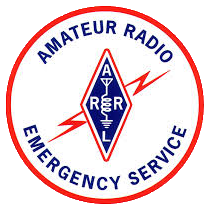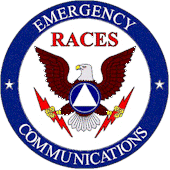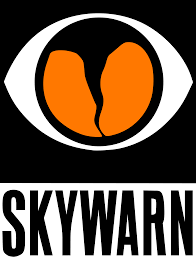Getting A Vanity Call Sign
- Details
- Published: 20 February 2024
Amateur radio operators are issued call signs by the FCC upon qualifying for their Technician license, and have the option to be issued new call signs that reflect their new class when they upgrade to General or Extra. The form of call sign is limited by license class, where higher class of licenses allow simpler/smaller call signs. For instance, a Technician class licensee may be issued something like KX4XTT (often referred to as a two by three, two letters before the number and three after); however an Extra class licensee may have a call sign like W4BK (often referred to as a one by two). There are various call sign formats between these extremes, often limited by license class. You can view the "rules" by going to this link and clicking on "Sequential Call Sign System".
A person with a General, Advanced, or Extra license may have a Technician class call sign, but not the other way around. Most people, when upgrading their license, choose to keep their original call sign, and the rules allow for it. Others may request a new call sign be issued, but most prefer to choose their call sign if they are going to change it, which is where the Vanity Call Sign system comes into play.
Linked Repeater Networks
- Details
- Published: 27 January 2023
Many National Weather Service offices in the U.S. include Amateur Radio as a part of their operations plan, and most of those utilize a linked repeater network of some sort. We’re going to cover the general concept of a linked repeater network as well as how they work, and why local weather nets are often held on non-network repeaters.
A linked repeater network is a coordinated group of repeaters that rebroadcast radio transmissions picked up by other repeaters on the network, allowing ham radio operators hundreds of miles apart to communicate using a simple handheld, mobile, or fixed base radio. As a result, the NWS can keep up with weather conditions over a broad area, and operators can be forewarned of incoming weather conditions that may require local monitoring.
So, how do linked repeaters actually link? Linked repeaters have a 2nd radio interfaced with the repeater’s main radio, often called a “remote base”. This allows a signal coming in from the Remote Base to be transmitted by the repeater’s main radio and a signal coming in on the repeater’s main radio to be rebroadcast on the Remote Base.
Tabletop Exercises
- Details
- Published: 15 July 2021
Tabletop exercises are a useful tool for developing the skills to operate in a real-world situation, with the opportunity to identify many challenges and pitfalls before ever going through the effort of staging an actual exercise or deploy to an actual disaster.
Why tabletop versus a Simulated Emergency Test type exercise? Well, they are easier to plan and execute, all you need is a meeting place, and even the table is optional! Trying to coordinate an actual drill may require coordination with served agencies and place demand on physical resources like repeaters, radio equipment, or even served agency locations; all of this takes time and often places demands on other organizations.
Tabletop exercises can often be executed in an hour or two, where actual drills typically run much longer, placing more demands on the time of volunteers.
Tabletop exercises provide an opportunity to develop a plan or just work the bugs out of existing plans by playing "What if" games and talking through option when dealing with mission critical information such as knowing primary and backup repeaters, what to do when repeaters are down, frequencies and timetables for simplex communication, etc.
Why Digital Communications?
- Details
- Published: 09 September 2021
We've been covering various digital modes over the past few months, particularly PSK, APRS & Winlink.
While digital voice modes like D-Star, Fusion, and others offer some other EMCOMM related enhancements to our conventional analog modes, the real improvement in our ability to communicate comes from our ability to automate various functions and communicate complex data more efficiently, digital modes that allow us to harness the power of computers.
While operators tended to deploy more as "shadows" of key personnel like ambulance drivers, police, fire, or shelter employees in decades gone by, the growing ability of local, state, and federal agencies to interoperate has virtually eliminated the need for such services.
As a result, our mission required change, and are still changing. Communities with active Community Emergency Response Teams (CERT) often embed amateur radio operators as members, serving as a CERT member, enhancing their team with additional communication capabilities. Amateur Radio operators have been included in Search and Rescue (SAR) and Damage Assessment teams during disasters as well.
Automated Packet Reporting System (APRS)
- Details
- Published: 06 May 2021
APRS is packet-based digital tracking and communication system. It's best known for allowing operators to report their position or weather station data by internet or radio and be tracked using APRS clients and websites like aprs.fi, but APRS is useful for more than that. APRS also allows simple short messages between operators, sort of a radio-based text-messaging system. As a matter of fact, there is a text-message gateway available, allowing an operator to use their APRS setup to send text messages to cell phones and receive responses!
Since APRS allows for position reporting it has applications in search and rescue, damage assessment situations, and public service events like running and bike races. By embedding amateur radio operators into the field teams their progress can be monitored via APRS utilizing both online and offline mapping systems.
Although this makes APRS a potentially robust tool for public service, it's also useful for other activities, such as our summer balloon launches, where the balloon carries an APRS transmitter we then track to recover the balloon payload, which usually includes cameras and other electronics.






